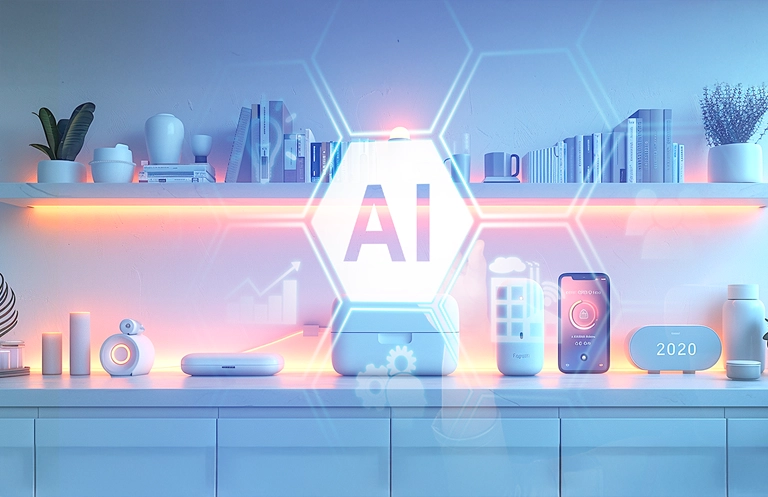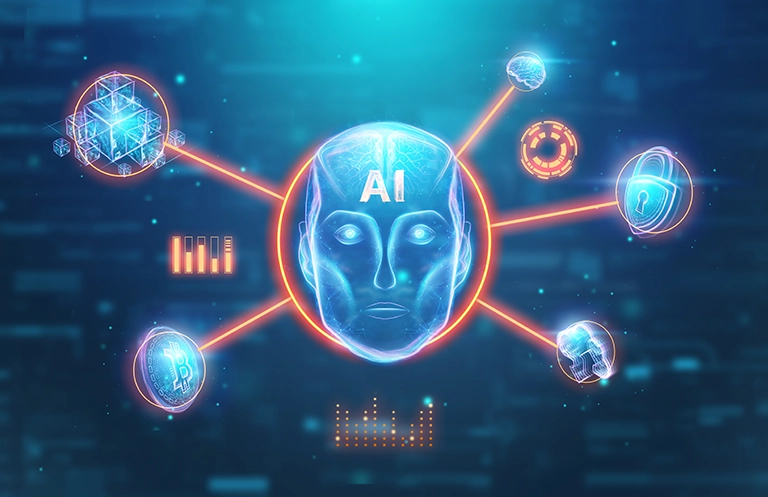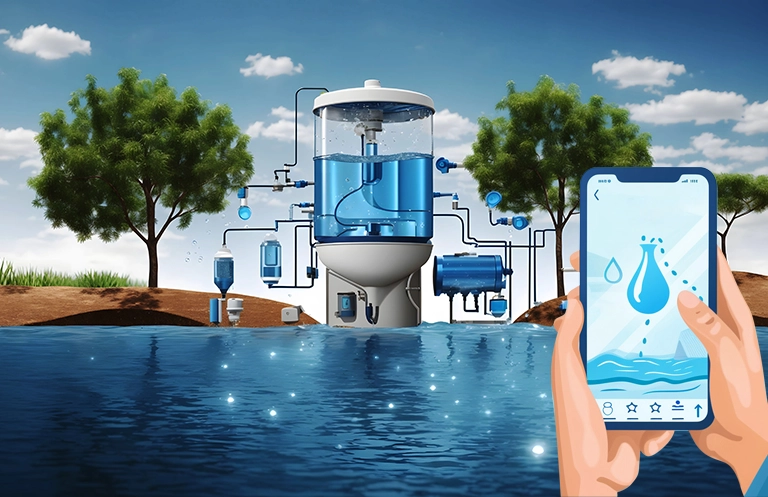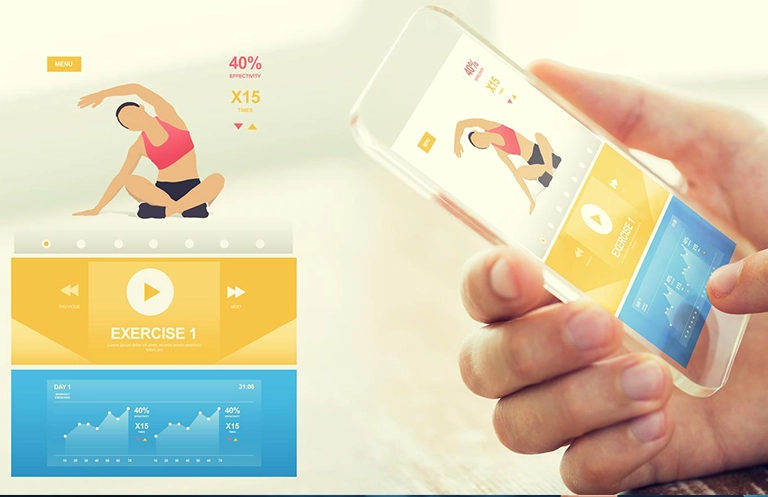Why is RPM needed?
The pandemic has restricted people’s movement, and everyone is home-bound. The elderly is more vulnerable since they are more prone to chronic diseases and require frequent medical examinations. Furthermore, going to the hospital for a check-up is not only time-consuming but also increases the risk of contracting the infection. These factors have contributed to the adoption of RPM.
Table of Contents
- Why is RPM needed?
- How Remote Patient Monitoring Aids COVID-19 Treatment
- Use cases of Remote Patient Monitoring
- The Future of RPM
Apart from these, the RPM industry is driven by many other factors including the lack of beds and the scarcity of doctors and healthcare specialists on board. Let us take a detailed look at how RPM is assisting in the COVID-19 treatment.
How Remote Patient Monitoring Aids COVID-19 Treatment
RPM is an effective way to assist the COVID-19 patients who are unable to visit the hospital promptly. It enables healthcare providers to monitor and manage patients remotely via virtual mediums like smartphones, tablets, and audio-video links. They can also collect samples and other vital information about patients’ health as they remain at home in a safe setting.
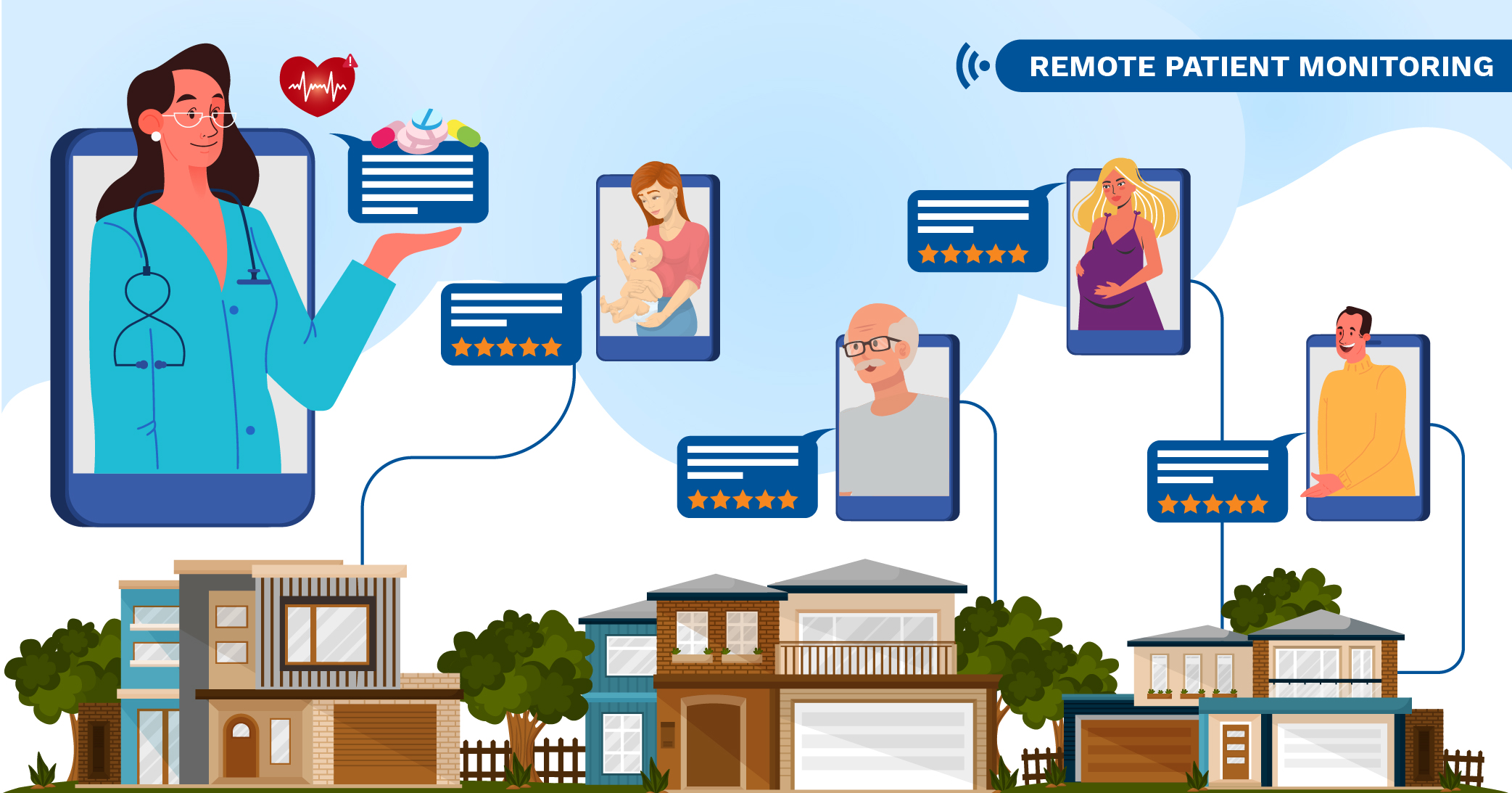
RPM is assisting healthcare providers in overcoming challenges, especially in COVID-19 care. Let’s look at the role of RPM in this regard:
As the COVID-19 pandemic rages globally, the patients and their families are directed to self-isolate or quarantine based on the severity of the illness. A Smart Home Health Monitoring System’s primary purpose is to control the health monitoring devices and record the patient’s physiological data like temperature, pulse rate, blood pressure, body weight, sugar, and other COVID-19 symptoms. After that, either the sensors wirelessly feed the patients’ health information into the system, or the healthcare provider manually does so for the doctors to examine it. The outpatients and the quarantined ones can also live a happy life at home with the support of the system, which reduces the burden of hospital visits.
RPM can assist older patients in better manage their chronic diseases by allowing them to regularly monitor their physiological aspects and communicating the details to the doctor for quick assistance. For example, dementia patients are prone to falling. Doctors are increasingly using RPM sensors or assertive movement devices like walkers and walking-canes to monitor their patient’s linear acceleration, step, angular velocity, and mathematical algorithm to predict the likelihood of future falls. These gadgets are equipped with tracking technologies like GPS or radiofrequency to help the caregivers in locating the senior patients in case of adverse events.
Use cases of Remote Patient Monitoring
Cutting-edge technologies such as IoT, AI/ML, mobility, and data analytics have unlocked opportunities for developing various wearables, portable and hand-held patient monitors for RPM. This has helped healthcare providers to monitor and diagnose patients with debilitating conditions who require rapid medical attention.
RPM can also offer insights into the potential side effects of COVID-19 vaccinations. It is used to collect health data from patients via connected devices such as wearables, portable or hand-held monitors, and send the data to the providers. These monitoring devices record vital information that helps ascertain a baseline before a patient is given the first vaccine jab. Once the baseline is documented and verified, clinical trials recognize the prime’s effect and increase the vaccine doses accordingly.
Along with the digital biomarkers, RPM helps track and monitor the COVID-19 symptoms among the population to contain a potential outbreak. Wearable gadgets or smartphones have been deployed to monitor the body temperature, respiratory rate, frequency of coughs, and heartbeats to identify the individuals who are at risk of COVID-19 infection while tracking other symptoms and even the disease’s progress.
RPM also helped tackle the shortage of beds in the hospitals during the second COVID-19 outbreak. Hospitals countrywide are employing contactless vitals monitors to treat COVID-19 patients who need constant monitoring and care. It has an AI-powered triaging system that allows continuous and accurate monitoring of a patient’s heartbeat, respiratory, and other stats like sleep apnea, myocardial performance metrics, all without any contact with the patient. In addition, Machine Learning (ML) assists scientists and government officials understand the pattern of COVID-19, expedites the medicines’ development and gauges the need for hospital beds. Remote device management services can be crucial in maintaining these advanced monitoring systems efficiently.
Remote device management services
Recently, we helped one of our clients develop a Multi-sensor Portable Health Monitoring Device that works on a cloud-based machine learning algorithm. This device can detect vital health stats and disease progression from the patient’s lips and fingertips in time for the healthcare providers to intervene and give necessary care at home. These devices warn the users of possible infections and give general information, prevention, and updates on the disease’s transmission in real-time.
The Future of RPM
As per MarketsandMarkets research report, the global RPM market has reached USD 23.2 billion in 2020 and will jump to USD 117.1 billion by 2025 with a 38.2% CAGR. In the current scenario of the global pandemic, such solutions become inevitable.
RPM has the potential to make treatment and care less reactive that allows patients and clinicians to intervene earlier and avoid exacerbations and hospitalizations. The entire healthcare industry will gain from the massive data flow if a patient-centric approach based on digital technology is adopted. AI and ML can be used to analyze the data and identify the people who are more at risk, both psychosocially and physically. Furthermore, data can help with the clinical trials for drug detection and disease prevention, and enable faster development of new vaccines and treatments, for COVID-19 and other disorders.
Final words
RPM can help hospitals be ready to tackle the third wave of COVID-19. To make it more efficient, hospitals and governments must have adequate infrastructure in place. The RPM data can be analyzed to look for patterns to cope better with the disease. RPM can assist hospitals in limiting the patient volume and ensuring that each patient receives the care they require.
At eInfochips, we leverage our capabilities to make healthcare safer and efficient while delivering a better patient experience. We have strong expertise in developing FDA class II/III device and data solutions for remote patient monitoring applications, telehealth, diagnostic, and therapeutic. The healthcare organizations that wish to tap into this immense potential can kick-start the process with eInfochips. To know more about RPM, contact us today!


